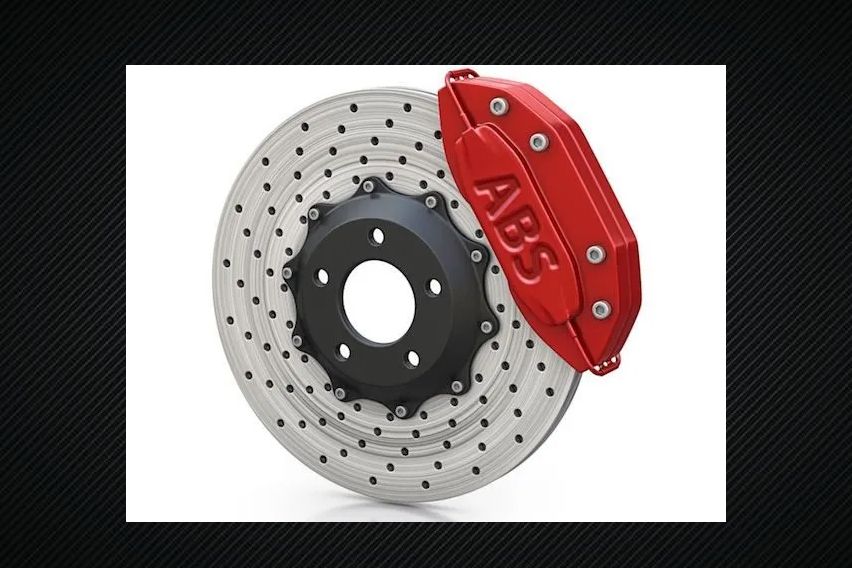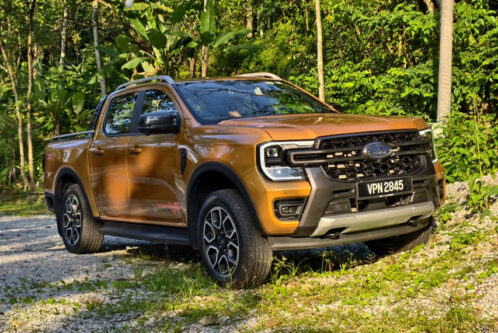Anti-Lock Braking System: An essential for safe driving

- KEY TAKEAWAYS
- What is an Anti-Lock Braking System?
- Main components of the Anti-lock Braking System
- Advantages of Anti-Lock Braking System
- Improved Braking Performance
- Shorter Stopping Distance
- Increased Steering Control
- Better Traction on Slippery Surfaces
- Disadvantages of Anti-Lock Braking System
- Type of ABS
- Lippert Anti-Lock Braking System
- Conclusion
When it comes to vehicle safety, one of the most important features is the braking system. In recent years, advancements in technology have led to the development of anti-lock braking systems (ABS). This system has become a standard feature in most modern vehicles, and for good reason. In this article, we will explore the benefits of anti-lock braking systems and why they are an essential component for safe driving.
KEY TAKEAWAYS
What is the function of electronic brake distribution with ABS?
When the brakes are applied in a car with an anti-lock braking system, an electronic control unit does not let the wheels lock and keep them intermittently rotating. During rotation, due to loads, road conditions, and different speeds, all four wheels require different amounts of brake force to bring them to rest. Here enters the electronic brakeforce distribution system. It detects the brake force required by each wheel and supplies just as much as needed to keep the vehicle balanced.What are the three types of Anti-lock Braking System?
The three types of ABS are - Four channel-four sensor ABS, Three channel- four sensor ABS, and Three channel- three sensor ABS.What are the major components of an anti-lock braking system?
There are four major components of ABS namely the speed sensors, valves, pump, and electronic control unit (ECU).What are the major benefits of an anti-lock brake system?
There are quite a few benefits of the anti-lock braking system including - reduced braking distance, wheels don’t lock up while stopping the vehicle, and there they won’t skid thus avoiding uneven tyre wear, it assists the traction control system, reduces the wearing of brake pads and brake discs, and With AMS, the car can be steered around obstacles.Q. What is an anti-lock braking system and how does it work?
The anti-lock braking system prevents the wheels from locking when the brakes are applied in a moving car. With ABS, as you apply the brakes, the speed sensors track the decreasing rotation of the wheels and when rotation is about to stop, they send a signal to the electric control unit (ECU). Then, the ECU partially releases the brake pads from the wheels through valves and pumps, allowing the wheel to continue rotating, Therefore you can maintain control over the car.Is ABS effective in preventing accidents?
Yes. ABS reduces the overall crash involvement by 6% in passenger cars and 8% in LTVs (light trucks, pick-up trucks, SUVs, and Vans). During braking, the system prevents the car from skidding which would certainly happen in heavy braking conditions.Are there any surfaces on which ABS doesn’t work?
Yes. ABS can be ineffective on gravel surfaces, very wet surfaces, and areas with icy conditions. This happens when the ABS partially releases the brakes from the wheels to let them continue rotating, however, there isn’t enough friction on such surfaces for the wheels to regain traction.What are some of the crucial safety features in a car?
Some crucial safety features in a car are ABS with EBD, rear parking sensors, dual front airbags, rear parking sensors, hill hold control, seatbelt pre-tensioners, and speed-sensing door locksWhat is an Anti-Lock Braking System?
Before we dive into the benefits, let's first understand what an anti-lock braking system is. Simply put, an ABS is a safety system that prevents the wheels of a vehicle from locking up during sudden braking. This allows the driver to maintain control of the vehicle and steer away from potential accidents.

Main components of the Anti-lock Braking System
The four main components of the ABS include speed sensors, valves, pumps, and ECU.
Speed sensors: To monitor the speed of the wheels.
Valves: Present in the brake line they allow, block, and release pressure on the brakes.
Pumps: Filled with hydraulic fluid, the pumps apply pressure to the brake drums or calipers when brakes are applied.
ECU: The electronic control unit (ECU) reacts to the signals from the speed sensors.
Also Read: Car dashboard warning lights: Know them before its late
Advantages of Anti-Lock Braking System
Improved Braking Performance
The primary benefit of an anti-lock braking system is improved braking performance. With traditional braking systems, the wheels can lock up and skid when the brakes are applied suddenly. This can cause the driver to lose control of the vehicle and potentially lead to a collision. ABS prevents this by modulating the brake pressure to each wheel, allowing for controlled and efficient braking.
Shorter Stopping Distance
In addition to improved braking performance, ABS also helps to reduce the stopping distance of a vehicle. By preventing the wheels from locking up, the vehicle can come to a stop in a shorter distance. This is especially beneficial in emergency situations where every inch counts.
Increased Steering Control
Another significant benefit of ABS is increased steering control. When the wheels lock up, the driver loses the ability to steer the vehicle. With ABS, the wheels continue to rotate, allowing the driver to steer away from potential hazards. This can be crucial in avoiding accidents and keeping the driver and passengers safe.
Better Traction on Slippery Surfaces
ABS also provides better traction on slippery surfaces such as wet or icy roads. By preventing the wheels from locking up, the tires can maintain contact with the road, allowing for better control and stability. This is especially important in adverse weather conditions where the risk of skidding is higher.

Disadvantages of Anti-Lock Braking System
Variable braking distances: This occurs due to different types of surfaces
Complex working: The intricate arrangement of ECU and sensors leads to increased complexity
Maintenance cost: It is expensive to maintain ABS. Also, all ABS systems have an interval of mileage or time for how often you should schedule a maintenance service.
Also Read: 10 Easy Ways to Save Fuel

Type of ABS
The anti-lock braking system is segregated into three types depending on the number of speed sensors and valves in the vehicle. They are -
Four channel-four sensor ABS: A separate valve and a sensor is assigned to each wheel
Three channel-four sensor ABS: The front wheels get separate valves, while the rear wheels share a common setup. Separate sensor for all wheels.
Three channel-three sensor ABS: A valve and a sensor for each of the front wheels and a common valve and sensor for the rear wheels.
Lippert Anti-Lock Braking System
One of the leading manufacturers of ABS is Lippert Components. Their anti-lock braking system is designed specifically for trailers and RVs, providing improved safety and control while towing. This system is also equipped with a self-diagnostic feature, making it easy to identify and troubleshoot any issues.

Conclusion
In conclusion, anti-lock braking systems offer numerous benefits that make them an essential component for safe driving. From improved braking performance to increased steering control, ABS can help prevent accidents and keep drivers and passengers safe on the road.
So the next time you're in the market for a new vehicle, make sure to look for one equipped with an anti-lock braking system.
Also Read: Cruise Control: A comprehensive guide; meaning, pros & cons, usage, troubleshooting
Malaysia Autoshow
Trending & Fresh Updates
- Latest
- Popular
You might also be interested in
- News
Featured Cars
- Latest
- Upcoming
- Popular
Latest Car Videos on Zigwheels



















































